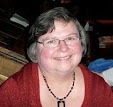In addition to her dog, Depeche Toi, Annie rescues an old horse, Tarzan, who was destined for the slaughter house and the three take off in mid-November, 1954. For over a year they traverse the country, guided by maps that were picked up in gas stations along the way. The reader shivers with her as she makes it through blizzards, feels how soaked she is after nearly drowning in a wash in the western mountains, and worries about her health and the health of her four-legged companions. In Tennessee, she is given the gift of another horse, Rex, who helps bear some of the burden of her gear and also helps transport Depeche Toi at times. There are some terrifying accidents along the way that are precipitated by the traffic encountered on the highways and the weather. Through all this the reader is rooting for Annie to make it to the west coast along her circuitous routing.
The account by Letts leaves the reader longing for the days in the United States when people were kind to each other and were eager to help and aid a poor woman on the journey of her life. One acquaintance sent Annie note cards that she could autograph and sell. Annie was becoming famous thanks to all the publicity that was given to her by newspapers and the fledgling television news shows. A family offered her to stay with them for the holidays, a woman dying of cancer met her on the roadside with a card table, table cloth, and tuna casserole, and a rancher in Wyoming offered his hand (and ranch) in a marriage proposal.
Perhaps, one of the most notable features of the book is the way Letts weaves in a lot of history. For those who lived through the 1950s, it provides a bit of nostalgia as well as many bits of trivia that one did not know. From the history of Milton Bradley games to the discussion of medical care and payment and her appearance on Art Linkletter's tv show, it adds so much to Annie's account. The research, cited at the end of the book, was scholarly, but the book was a heartwarming tribute to a woman who had courage, perseverance, love of animals, and the resilience to make it all work. A wonderful and uplifting read.





